Soyuz TM-31 / ISS Expedition 1
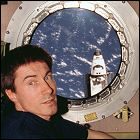 The crew of Soyuz TM-31 spends Halloween in orbit, lifting off from Russia’s Baikonur Cosmodrome on the first long-duration stay aboard the International Space Station. Cosmonauts Yuri Gidzenko and Sergei Krikalev and American astronaut William Shepherd are the first crew to take up residence on the ISS, staying aboard for 136 days. During that stay, they will be visited by the crews of three space shuttles (Endeavour, Atlantis and Discovery), all bringing new hardware modules to the station. This crew returns to Earth aboard Discovery, leaving the Soyuz TM-31 spacecraft as a return vehicle for the next ISS crew.
The crew of Soyuz TM-31 spends Halloween in orbit, lifting off from Russia’s Baikonur Cosmodrome on the first long-duration stay aboard the International Space Station. Cosmonauts Yuri Gidzenko and Sergei Krikalev and American astronaut William Shepherd are the first crew to take up residence on the ISS, staying aboard for 136 days. During that stay, they will be visited by the crews of three space shuttles (Endeavour, Atlantis and Discovery), all bringing new hardware modules to the station. This crew returns to Earth aboard Discovery, leaving the Soyuz TM-31 spacecraft as a return vehicle for the next ISS crew.
STS-92: opening the ISS for business
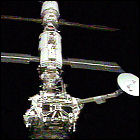 On the 100th flight of the American shuttle program, Space Shuttle Discovery pays a 13-day visit to the International Space Station, making final preparations before the station’s first crew arrives. A new shuttle docking port is added, and the first section of external truss is bolted onto the station, the beginning of a structure that will support the larger solar power panels to be installed during later construction missions. Discovery’s 28th crew is Commander Brian Duffy, Pilot Pam Melroy, and mission specialists Koichi Wakata, Leroy Chiao, Peter Wisoff, Michael Lopez-Alegria and William McArthur.
On the 100th flight of the American shuttle program, Space Shuttle Discovery pays a 13-day visit to the International Space Station, making final preparations before the station’s first crew arrives. A new shuttle docking port is added, and the first section of external truss is bolted onto the station, the beginning of a structure that will support the larger solar power panels to be installed during later construction missions. Discovery’s 28th crew is Commander Brian Duffy, Pilot Pam Melroy, and mission specialists Koichi Wakata, Leroy Chiao, Peter Wisoff, Michael Lopez-Alegria and William McArthur.
STS-106: getting the place ready
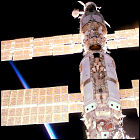 Space Shuttle Atlantis lifts off on the 99th shuttle mission, a 12-day visit to the still-unoccupied International Space Station. Spacewalks and work in the station’s pressurized compartments make the final connections between the Russian-launched Zvezda service module and the rest of the station, and over three tons of supplies – most flown aboard Atlantis, but some contained in an unmanned Progress supply ship which has already automatically docked to the station – are transferred to the station. Atlantis’ 21st crew is Commander Terrence Wilcutt, Pilot Scott Altman, and mission specialists Daniel Burbank, Edward Lu, Richard Mastracchio, Yuri Malenchenko and Boris Morokov. In 2003, Lu and Malenchenko will return as the station’s seventh full-time residents.
Space Shuttle Atlantis lifts off on the 99th shuttle mission, a 12-day visit to the still-unoccupied International Space Station. Spacewalks and work in the station’s pressurized compartments make the final connections between the Russian-launched Zvezda service module and the rest of the station, and over three tons of supplies – most flown aboard Atlantis, but some contained in an unmanned Progress supply ship which has already automatically docked to the station – are transferred to the station. Atlantis’ 21st crew is Commander Terrence Wilcutt, Pilot Scott Altman, and mission specialists Daniel Burbank, Edward Lu, Richard Mastracchio, Yuri Malenchenko and Boris Morokov. In 2003, Lu and Malenchenko will return as the station’s seventh full-time residents.
ISS: Zvezda module launched
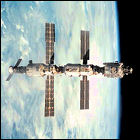 The third major piece of the International Space Station, the Mir-derived Zvezda service module, is launched from Russia. Once in orbit, automatic systems guide Zvezda toward rendezvous and docking with the combined Zarya and Unity modules that currently comprise the station. Zvezda adds life support systems and living quarters, as well as additional power-generating solar panels, to the station, completing the most basic building blocks necessary for ongoing occupation.
The third major piece of the International Space Station, the Mir-derived Zvezda service module, is launched from Russia. Once in orbit, automatic systems guide Zvezda toward rendezvous and docking with the combined Zarya and Unity modules that currently comprise the station. Zvezda adds life support systems and living quarters, as well as additional power-generating solar panels, to the station, completing the most basic building blocks necessary for ongoing occupation.
STS-101
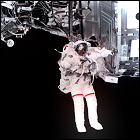 Carrying over 3,000 pounds of supplies for future station crews, Space Shuttle Atlantis lifts off on a ten-day mission to the International Space Station. The supplies include exercise equipment and general housekeeping gear; Atlantis boosts the still-under-construction vacant station’s orbit by 27 miles. Aboard Atlantis for her 20th flight are Commander James Halsell, Pilot Scott “Doc” Horowitz, and mission specialists Mary Ellen Weber, Jeff Williams, James Voss, Susan Helms and Yury Usachev.
Carrying over 3,000 pounds of supplies for future station crews, Space Shuttle Atlantis lifts off on a ten-day mission to the International Space Station. The supplies include exercise equipment and general housekeeping gear; Atlantis boosts the still-under-construction vacant station’s orbit by 27 miles. Aboard Atlantis for her 20th flight are Commander James Halsell, Pilot Scott “Doc” Horowitz, and mission specialists Mary Ellen Weber, Jeff Williams, James Voss, Susan Helms and Yury Usachev.
Soyuz TM-30: Mir’s final crew
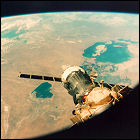 With help from the Russian space program, private corporation MirCorp launches Soyuz TM-30, the final spacecraft to visit the aging Mir space station. Sergei Zalyotin and veteran cosmonaut Aleksandr Kaleri become Mir’s first inhabitants in over eight months, and their mission is to begin refurbishing and repairing the 14-year-old station for what is hoped to be a series of commercial launches, including space tourism and even possibly a reality TV show set aboard Mir. What the two cosmonauts find, however, is that more work will be required than MirCorp can provide; after 72 days, the crew of Soyuz TM-30 returns to Earth, the money having run out before another crew can be sent. Mir will tumble out of its orbit and re-enter Earth’s atmosphere in 2001.
With help from the Russian space program, private corporation MirCorp launches Soyuz TM-30, the final spacecraft to visit the aging Mir space station. Sergei Zalyotin and veteran cosmonaut Aleksandr Kaleri become Mir’s first inhabitants in over eight months, and their mission is to begin refurbishing and repairing the 14-year-old station for what is hoped to be a series of commercial launches, including space tourism and even possibly a reality TV show set aboard Mir. What the two cosmonauts find, however, is that more work will be required than MirCorp can provide; after 72 days, the crew of Soyuz TM-30 returns to Earth, the money having run out before another crew can be sent. Mir will tumble out of its orbit and re-enter Earth’s atmosphere in 2001.
STS-99
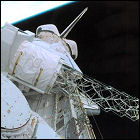 Space Shuttle Endeavour lifts off on the 97th shuttle flight, and the only one on the 2000 launch schedule not devoted to construction of the International Space Station. Instead, Endeavour carries out an 11-day radar topography mission, though the 200-foot radar mast deployed from the cargo bay changes Endeavour’s center of mass and necessitates an unusually high usage of the orbiter’s fuel to keep the vehicle and payload properly oriented. Endeavour’s 14th crew is Commander Kevin Kregel, Pilot Dominic Gorie, and mission specialists Janet Kavandi, Janice Voss, Mamoru Mohri and Gerhard Thiele.
Space Shuttle Endeavour lifts off on the 97th shuttle flight, and the only one on the 2000 launch schedule not devoted to construction of the International Space Station. Instead, Endeavour carries out an 11-day radar topography mission, though the 200-foot radar mast deployed from the cargo bay changes Endeavour’s center of mass and necessitates an unusually high usage of the orbiter’s fuel to keep the vehicle and payload properly oriented. Endeavour’s 14th crew is Commander Kevin Kregel, Pilot Dominic Gorie, and mission specialists Janet Kavandi, Janice Voss, Mamoru Mohri and Gerhard Thiele.
STS-103: return to Hubble
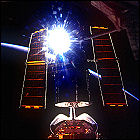 Space Shuttle Discovery lifts off on an eight-day mission to retrieve, service and redeploy the Hubble Space Telescope. This routine planned upgrade for Hubble sees the shuttle crew swapping out the $2,000,000,000 telescope’s CPU, installing a new one with 20 times the processing power of the original, during an eight-hour spacewalk; another eight-hour spacewalk sees crewmembers removing an analog data recorder to replace it with a digital device with greater capacity. Christmas 1999 is spent placing Hubble back into its orbit. Aboard Discovery for her 27th flight are Commander Curtis Brown, Pilot Scott Kelly, and mission specialists Steven Smith, Michael Foale, John Grunsfield, Claude Nicollier and Jean-Francois Clervoy.
Space Shuttle Discovery lifts off on an eight-day mission to retrieve, service and redeploy the Hubble Space Telescope. This routine planned upgrade for Hubble sees the shuttle crew swapping out the $2,000,000,000 telescope’s CPU, installing a new one with 20 times the processing power of the original, during an eight-hour spacewalk; another eight-hour spacewalk sees crewmembers removing an analog data recorder to replace it with a digital device with greater capacity. Christmas 1999 is spent placing Hubble back into its orbit. Aboard Discovery for her 27th flight are Commander Curtis Brown, Pilot Scott Kelly, and mission specialists Steven Smith, Michael Foale, John Grunsfield, Claude Nicollier and Jean-Francois Clervoy.
STS-93
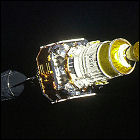 Space Shuttle Columbia lifts off on a five-day mission to deploy the Chanda X-Ray Observatory satellite. The first American space mission with a woman in the commander’s seat, this flight also includes some ultraviolet astronomy experiments, and sees the first test of HDTV equipment in space. Aboard Columbia for her 26th mission are Commander Eileen Collins, Pilot Jeff Ashby, and mission specialists Steven Hawley, Catherine Coleman and Michel Tognini. After landing, Columbia is removed from the orbiter rotation with the intention of permanent retirement, though a demanding launch schedule convinces NASA to upgrade Columbia and return the flagship of the shuttle fleet to service in 2002.
Space Shuttle Columbia lifts off on a five-day mission to deploy the Chanda X-Ray Observatory satellite. The first American space mission with a woman in the commander’s seat, this flight also includes some ultraviolet astronomy experiments, and sees the first test of HDTV equipment in space. Aboard Columbia for her 26th mission are Commander Eileen Collins, Pilot Jeff Ashby, and mission specialists Steven Hawley, Catherine Coleman and Michel Tognini. After landing, Columbia is removed from the orbiter rotation with the intention of permanent retirement, though a demanding launch schedule convinces NASA to upgrade Columbia and return the flagship of the shuttle fleet to service in 2002.
The raising of Liberty Bell 7
 A day short of exactly 38 years since the capsule flew its suborbital flight and then sank as it took on water upon splashdown, Liberty Bell 7, the Mercury capsule flown by Gus Grissom in 1961, is raised from the floor of the Atlantic Ocean from a depth of almost 16,000 feet. The recovery, requiring specialized deep sea equipment, is bankrolled by the Discovery Channel, which gains exclusive broadcast rights to the event. The capsule itself is cleaned up, restored, and put on display at the Kansas Cosmosphere space museum in Hutchinson, Kansas.
A day short of exactly 38 years since the capsule flew its suborbital flight and then sank as it took on water upon splashdown, Liberty Bell 7, the Mercury capsule flown by Gus Grissom in 1961, is raised from the floor of the Atlantic Ocean from a depth of almost 16,000 feet. The recovery, requiring specialized deep sea equipment, is bankrolled by the Discovery Channel, which gains exclusive broadcast rights to the event. The capsule itself is cleaned up, restored, and put on display at the Kansas Cosmosphere space museum in Hutchinson, Kansas.
Pete Conrad, astronaut, dies
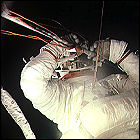 Pete Conrad, the Apollo 12 commander who was the third human to walk on the moon, dies at the age of 69 from injuries suffered in a motorcycle accident. Conrad went to the moon in November 1969, and flew two earlier Gemini missions, one of which was a new human endurance record at the time. Conrad later went on to set a new record for time spent by a human in space (28 days, unprecedented at the time) in 1973 as a member of the first Skylab crew. Conrad and fellow Skylab astronaut Joseph Kerwin performed an extended and very hazardous spacewalk to repair the station, which had been heavily damaged during launch a few weeks before its crew arrived.
Pete Conrad, the Apollo 12 commander who was the third human to walk on the moon, dies at the age of 69 from injuries suffered in a motorcycle accident. Conrad went to the moon in November 1969, and flew two earlier Gemini missions, one of which was a new human endurance record at the time. Conrad later went on to set a new record for time spent by a human in space (28 days, unprecedented at the time) in 1973 as a member of the first Skylab crew. Conrad and fellow Skylab astronaut Joseph Kerwin performed an extended and very hazardous spacewalk to repair the station, which had been heavily damaged during launch a few weeks before its crew arrived.
STS-96: ISS under construction
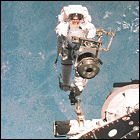 NASA launches Space Shuttle Discovery on the first of only three 1999 shuttle flights, a ten-day mission to continue preparing the International Space Station for full-time duty. 80 hours are spent inside the station, transferring supplies into the existing modules for future crews, and spacewalks are conducted to perform necessary tasks outside the station. Aboard Discovery for her 26th flight are Commander Kent Rominger, Pilot Rick Husband, and mission specialists Ellen Ochoa, Tammy Jernigan, Daniel Barry, Julie Payette and Valery Tokarev.
NASA launches Space Shuttle Discovery on the first of only three 1999 shuttle flights, a ten-day mission to continue preparing the International Space Station for full-time duty. 80 hours are spent inside the station, transferring supplies into the existing modules for future crews, and spacewalks are conducted to perform necessary tasks outside the station. Aboard Discovery for her 26th flight are Commander Kent Rominger, Pilot Rick Husband, and mission specialists Ellen Ochoa, Tammy Jernigan, Daniel Barry, Julie Payette and Valery Tokarev.
Soyuz TM-29: last call for Mir
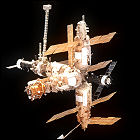 Russia launches Soyuz TM-29 to the Mir space station, carrying an international crew. Cosmonaut Viktor Afanasyev, French spationaut Jean-Pierre Haigneré, and Slovakian cosmonaut Ivan Bella are aboard. Afanasyev and Haigneré take up residence aboard Mir for 188 days, while Bella returns to Earth with Mir’s previous crew aboard Soyuz TM-28 after one week. When Afanasyev and Haigneré return to Earth in August 1999, they bring home cosmonaut Sergei Avdeyev, who by that point has served a full year in orbit aboard Mir. This is the last flight to Mir sponsored by the Russian government, which is now throwing its weight behind the International Space Station, and Mir is left unmanned when Soyuz TM-29 returns to Earth.
Russia launches Soyuz TM-29 to the Mir space station, carrying an international crew. Cosmonaut Viktor Afanasyev, French spationaut Jean-Pierre Haigneré, and Slovakian cosmonaut Ivan Bella are aboard. Afanasyev and Haigneré take up residence aboard Mir for 188 days, while Bella returns to Earth with Mir’s previous crew aboard Soyuz TM-28 after one week. When Afanasyev and Haigneré return to Earth in August 1999, they bring home cosmonaut Sergei Avdeyev, who by that point has served a full year in orbit aboard Mir. This is the last flight to Mir sponsored by the Russian government, which is now throwing its weight behind the International Space Station, and Mir is left unmanned when Soyuz TM-29 returns to Earth.
ISS: Unity node arrives
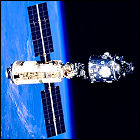 Space Shuttle Endeavour joins the first two modules of the International Space Station together, having carried the Unity docking node into orbit in its cargo bay. With no living quarters or long-term life support facilities, the station is not yet ready for full-time occupancy; two further shuttle missions are required to prepare the station for its next major addition.
Space Shuttle Endeavour joins the first two modules of the International Space Station together, having carried the Unity docking node into orbit in its cargo bay. With no living quarters or long-term life support facilities, the station is not yet ready for full-time occupancy; two further shuttle missions are required to prepare the station for its next major addition.
STS-88: laying the ISS cornerstone
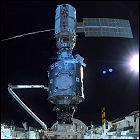 Space Shuttle Endeavour lifts off to begin the construction of the International Space Station. Endeavour conducts a rendezvous with the already-launched Zarya module and attached the Unity station module to it. The two modules’ external connections are completed during a spacewalk, and the station is powered up for the first time on December 7th. Endeavour’s 13th crew is Commander Robert Cabana, Pilot Frederick Sturckow, and mission specialists Nancy Currie, Jerry Ross, James Newman and Sergei Krikalev. Cabana and Krikalev are the first humans to enter the International Space Station, but since the fledgeling facility lacks long-term habitation facilities, it is left unmanned at the end of the 12 day mission.
Space Shuttle Endeavour lifts off to begin the construction of the International Space Station. Endeavour conducts a rendezvous with the already-launched Zarya module and attached the Unity station module to it. The two modules’ external connections are completed during a spacewalk, and the station is powered up for the first time on December 7th. Endeavour’s 13th crew is Commander Robert Cabana, Pilot Frederick Sturckow, and mission specialists Nancy Currie, Jerry Ross, James Newman and Sergei Krikalev. Cabana and Krikalev are the first humans to enter the International Space Station, but since the fledgeling facility lacks long-term habitation facilities, it is left unmanned at the end of the 12 day mission.
ISS: Zarya module launched
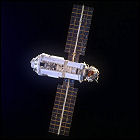 The orbital construction of the International Space Station formally begins with the launch, via a Russian Proton rocket, of the Zarya module. A direct descendant of the core module of the Mir space station, Zarya provides docking access, the station’s first set of solar power panels, and storage. The second component of the station is due to be launched shortly afterward via Space Shuttle.
The orbital construction of the International Space Station formally begins with the launch, via a Russian Proton rocket, of the Zarya module. A direct descendant of the core module of the Mir space station, Zarya provides docking access, the station’s first set of solar power panels, and storage. The second component of the station is due to be launched shortly afterward via Space Shuttle.
STS-95: John Glenn returns to space
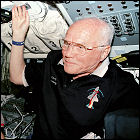 The first American to orbit Earth returns to orbit aboard Space Shuttle Discovery. During a ten-day mission with the SPACEHAB laboratory module installed in the cargo bay, the crew conducts medical experiments with Mercury astronaut John Glenn, comparing his results against the results of identical experiments performed with one of his crewmates, to determine the effect of weightlessness on older space travelers. At the age of 77, Glenn is the world’s oldest space traveler (and is still a sitting member of the U.S. Senate at the time of his flight). Discovery’s crew on her 25th flight is Commander Curtis Brown, Pilot Steven Lindsey, mission specialists Scott Parazynski, Stephen Robinson and Pedro Duque, and payload specialists Chiaki Mukai and John Glenn.
The first American to orbit Earth returns to orbit aboard Space Shuttle Discovery. During a ten-day mission with the SPACEHAB laboratory module installed in the cargo bay, the crew conducts medical experiments with Mercury astronaut John Glenn, comparing his results against the results of identical experiments performed with one of his crewmates, to determine the effect of weightlessness on older space travelers. At the age of 77, Glenn is the world’s oldest space traveler (and is still a sitting member of the U.S. Senate at the time of his flight). Discovery’s crew on her 25th flight is Commander Curtis Brown, Pilot Steven Lindsey, mission specialists Scott Parazynski, Stephen Robinson and Pedro Duque, and payload specialists Chiaki Mukai and John Glenn.
Soyuz TM-28
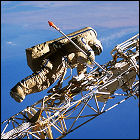 Russia launches Soyuz TM-28 on a mission to the Mir space station, with cosmonauts Gennady Padalka, Sergei Avdeyev and Yuri Baturin aboard. Padalka spends 198 days aboard Mir, conducting further repairs to the station damaged by a 1997 collision with a Progress cargo vehicle, while former politician Baturin remains aboard for 11 days before returning to Earth aboard Soyuz TM-27 with Mir’s previous crew. Avdeyev is aboard Mir for the long haul, spending just over a year in space and not returning to Earth until August 1999.
Russia launches Soyuz TM-28 on a mission to the Mir space station, with cosmonauts Gennady Padalka, Sergei Avdeyev and Yuri Baturin aboard. Padalka spends 198 days aboard Mir, conducting further repairs to the station damaged by a 1997 collision with a Progress cargo vehicle, while former politician Baturin remains aboard for 11 days before returning to Earth aboard Soyuz TM-27 with Mir’s previous crew. Avdeyev is aboard Mir for the long haul, spending just over a year in space and not returning to Earth until August 1999.
STS-91: last stop at Mir
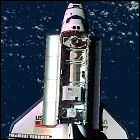 Space Shuttle Discovery becomes the last American shuttle to visit space station Mir during a ten-day mission launched on this date. The historic mission is marred slightly by a communications malfunction which makes live TV transmissions from orbit impossible. In addition to retrieving American science experiment packages from Mir, a cargo-bay-mounted experiment to detect dark matter is also conducted. Supplies are also off-loaded onto Mir. Aboard Discovery for her 24th flight are Commander Charles Precourt, Pilot Dominic Gorie, and mission specialists Wendy Lawrence, Franklin Chang-Diaz, Janet Kavandi and Valery Ryumin. Mir astronaut Andrew Thomas, the last American to visit the Russian station, returns to Earth aboard Discovery.
Space Shuttle Discovery becomes the last American shuttle to visit space station Mir during a ten-day mission launched on this date. The historic mission is marred slightly by a communications malfunction which makes live TV transmissions from orbit impossible. In addition to retrieving American science experiment packages from Mir, a cargo-bay-mounted experiment to detect dark matter is also conducted. Supplies are also off-loaded onto Mir. Aboard Discovery for her 24th flight are Commander Charles Precourt, Pilot Dominic Gorie, and mission specialists Wendy Lawrence, Franklin Chang-Diaz, Janet Kavandi and Valery Ryumin. Mir astronaut Andrew Thomas, the last American to visit the Russian station, returns to Earth aboard Discovery.
STS-90
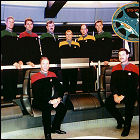 NASA launches Space Shuttle Columbia on the 90th shuttle mission, in which 16 days are spent in orbit conducting studies of the human nervous system in a weightless environment. This is the final flight of the 20-year-old Spacelab module aboard a space shuttle, though some elements of Spacelab are later incorporated into the International Space Station. Columbia’s 25th crew is Commander Richard Searfoss, Pilot Scott Altman, and mission specialists Richard Linnehan, Dafydd Rhys Williams and Kathryn Hire, and payload specialists Dr. Jay Buckey and Dr. James Pawelczyk. (The crew, along with backup crewmembers, is pictured here during a visit to the set of Star Trek: Voyager.)
NASA launches Space Shuttle Columbia on the 90th shuttle mission, in which 16 days are spent in orbit conducting studies of the human nervous system in a weightless environment. This is the final flight of the 20-year-old Spacelab module aboard a space shuttle, though some elements of Spacelab are later incorporated into the International Space Station. Columbia’s 25th crew is Commander Richard Searfoss, Pilot Scott Altman, and mission specialists Richard Linnehan, Dafydd Rhys Williams and Kathryn Hire, and payload specialists Dr. Jay Buckey and Dr. James Pawelczyk. (The crew, along with backup crewmembers, is pictured here during a visit to the set of Star Trek: Voyager.)
Soyuz TM-27
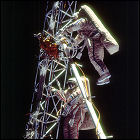 Russia launches the Soyuz TM-27 spacecraft on a mission to the Mir space station. Aboard are cosmonauts Talgat Musabayev and Nikolai Budarin; French spationaut Léopold Eyharts joins them for a 20-day before he returns to Earth with Mir’s previous crew. Musabayev and Budarin remain in orbit on Mir for 207 days, returning to Earth in August 1998 with cosmonaut Yuri Baturin. During their stay, further repairs were conducted to Mir’s solar power panels, which were damaged in a 1997 collision with a Progress unmanned cargo vehicle.
Russia launches the Soyuz TM-27 spacecraft on a mission to the Mir space station. Aboard are cosmonauts Talgat Musabayev and Nikolai Budarin; French spationaut Léopold Eyharts joins them for a 20-day before he returns to Earth with Mir’s previous crew. Musabayev and Budarin remain in orbit on Mir for 207 days, returning to Earth in August 1998 with cosmonaut Yuri Baturin. During their stay, further repairs were conducted to Mir’s solar power panels, which were damaged in a 1997 collision with a Progress unmanned cargo vehicle.
STS-89: eighth Shuttle-Mir docking
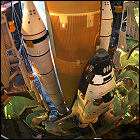 Space Shuttle Endeavour is launched on a nine-day mission to dock with the Russian Mir space station. Routine resupply activities are carried out, along with crew rotations. Endeavour’s crew for her 12th flight consists of Commander Terrence Wilcutt, Pilot Joe Edwards, Payload Commander Bonnie Dunbar, and mission specialists Michael Anderson, James Reilly, Salizhan Sharipov and Andrew Thomas. Thomas remains on Mir, while David Wolf returns to Earth aboard Endeavour.
Space Shuttle Endeavour is launched on a nine-day mission to dock with the Russian Mir space station. Routine resupply activities are carried out, along with crew rotations. Endeavour’s crew for her 12th flight consists of Commander Terrence Wilcutt, Pilot Joe Edwards, Payload Commander Bonnie Dunbar, and mission specialists Michael Anderson, James Reilly, Salizhan Sharipov and Andrew Thomas. Thomas remains on Mir, while David Wolf returns to Earth aboard Endeavour.
STS-87
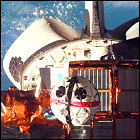 Space Shuttle Columbia lifts off on the 88th shuttle flight, a mission lasting nearly 16 days to conduct microgravity studies and deploy a space science payload which begins spinning after the shuttle’s manipulator arm releases it. Plans to match the shuttle to the satellite’s rotation and recapture it are called off in favor of a no-less-risky seven-hour, two-man spacewalk to slow the satellite’s rotation and retrieve it. Aboard Columbia for her 24th flight are Commander Kevin Kregel, Pilot Steven Lindsey, and mission specialists Winston Scott, Kalpana Chawla, Takao Doi and Leonid Kadenyuk.
Space Shuttle Columbia lifts off on the 88th shuttle flight, a mission lasting nearly 16 days to conduct microgravity studies and deploy a space science payload which begins spinning after the shuttle’s manipulator arm releases it. Plans to match the shuttle to the satellite’s rotation and recapture it are called off in favor of a no-less-risky seven-hour, two-man spacewalk to slow the satellite’s rotation and retrieve it. Aboard Columbia for her 24th flight are Commander Kevin Kregel, Pilot Steven Lindsey, and mission specialists Winston Scott, Kalpana Chawla, Takao Doi and Leonid Kadenyuk.
STS-86: seventh Shuttle-Mir docking
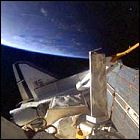 Space Shuttle Atlantis lifts off on an 11-day mission to dock with the Mir space station. In addition to routine supplies, replacement parts are brought to Mir to swap out with equipment damaged during the various incidents and accidents endured by Mir Expedition 23. The first-ever joint American/Russian spacewalk is conducted to undertake some of the repair activity and to try to find the location of the Spektr module hull breach. Aboard Atlantis for her 19th flight are Commander James Wetherbee, Pilot Michael Bloomfield, and mission specialists Vladimar Titov, Scott Parazynski, Jean-Loup Chretien, Wendy Lawrence and David Wolf. Wolf remains on Mir to join the Expedition 24 crew, while Mir crewmember Michael Foale returns to Earth aboard Atlantis, having served 145 unusually eventful days in space.
Space Shuttle Atlantis lifts off on an 11-day mission to dock with the Mir space station. In addition to routine supplies, replacement parts are brought to Mir to swap out with equipment damaged during the various incidents and accidents endured by Mir Expedition 23. The first-ever joint American/Russian spacewalk is conducted to undertake some of the repair activity and to try to find the location of the Spektr module hull breach. Aboard Atlantis for her 19th flight are Commander James Wetherbee, Pilot Michael Bloomfield, and mission specialists Vladimar Titov, Scott Parazynski, Jean-Loup Chretien, Wendy Lawrence and David Wolf. Wolf remains on Mir to join the Expedition 24 crew, while Mir crewmember Michael Foale returns to Earth aboard Atlantis, having served 145 unusually eventful days in space.
STS-85
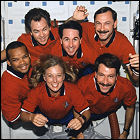 NASA launches Space Shuttle Discovery on the 86th shuttle flight, a 12-day mission to deploy a spectroscopy experiment and practice spacewalking construction techniques vital to the upcoming early missions to build the International Space Station. Aboard Discovery for her 23rd flight are Commander Curtis Brown, Pilot Kent Rominger, mission specialists Jan Davis, Robert Curbeam and Stephen Robinson, and payload specialist Bjarni Tryggvason.
NASA launches Space Shuttle Discovery on the 86th shuttle flight, a 12-day mission to deploy a spectroscopy experiment and practice spacewalking construction techniques vital to the upcoming early missions to build the International Space Station. Aboard Discovery for her 23rd flight are Commander Curtis Brown, Pilot Kent Rominger, mission specialists Jan Davis, Robert Curbeam and Stephen Robinson, and payload specialist Bjarni Tryggvason.
Soyuz TM-26
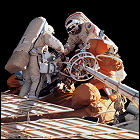 Russia launches Soyuz TM-26 on a mission to the Mir space station, which suffered numerous major malfunctions and damage during its previous crew’s stay. Aboard the Soyuz are specially selected cosmonauts Anatoly Solovyev and Pavel Vinogradov, who have trained on the ground to inspect and repair the damage to the station, though they are unable to find the hull damage to the now-abandoned Spektr module which threatened to cause total decompression of the station. They do manage to restore most of Mir’s solar power generating capability during their 197-day stay, returning to Earth in February 1998 with French spationaut Léopold Eyharts.
Russia launches Soyuz TM-26 on a mission to the Mir space station, which suffered numerous major malfunctions and damage during its previous crew’s stay. Aboard the Soyuz are specially selected cosmonauts Anatoly Solovyev and Pavel Vinogradov, who have trained on the ground to inspect and repair the damage to the station, though they are unable to find the hull damage to the now-abandoned Spektr module which threatened to cause total decompression of the station. They do manage to restore most of Mir’s solar power generating capability during their 197-day stay, returning to Earth in February 1998 with French spationaut Léopold Eyharts.
STS-94: do-over in space
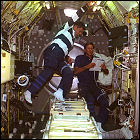 For the first and only time in the history of the American space program, a previously aborted mission is flown with the same vehicle, cargo and crew. Space Shuttle Columbia returns to orbit with Spacelab in its cargo bay for an attempt to fully carry out the aborted STS-83 mission, which was recalled to Earth in April. This time, the mission is successful, with nearly 16 days of microgravity experiments carried out by the crew. Flying Columbia – again – are Commander James Halsell, Pilot Susan Still, Payload Commander Janice Voss, mission specialists Donald Thomas and Michael Gernhardt, and payload specialists Roger Crouch and Greg Linteris.
For the first and only time in the history of the American space program, a previously aborted mission is flown with the same vehicle, cargo and crew. Space Shuttle Columbia returns to orbit with Spacelab in its cargo bay for an attempt to fully carry out the aborted STS-83 mission, which was recalled to Earth in April. This time, the mission is successful, with nearly 16 days of microgravity experiments carried out by the crew. Flying Columbia – again – are Commander James Halsell, Pilot Susan Still, Payload Commander Janice Voss, mission specialists Donald Thomas and Michael Gernhardt, and payload specialists Roger Crouch and Greg Linteris.
“Decompression on station!”
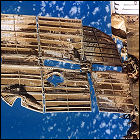 During an attempt to manually redock a Progress unmanned supply capsule via remote control from space station Mir, Mir Commander Vasily Tsibliev misjudges Progress’ speed and distance, and the vehicle collides with the station’s Spektr module, breaching that module’s outer skin and allowing decompression to begin. As the hatch to that compartment is sealed off to save the rest of the station (and the crew’s lives), Mir begins tumbling in its orbit, losing power (and all contact with Earth) as its solar panels lose orientation to the sun. With only fleeting opportunities to contact ground controllers, the station’s crew of three has to use the thrusters of the Soyuz vehicle docked at Mir to realign the station and begin receiving solar power again, a process which takes 30 hours; they are unable to use the station’s rest room facility for over 48 hours due to the power loss. The Spektr module is never repaired and it remains sealed off for the remainder of Mir’s time in orbit; makeshift rewiring ensures that the solar panels not damaged in the collision return to service. Most of astronaut Michael Foale’s personal items and experiment data, stored in Spektr, are lost.
During an attempt to manually redock a Progress unmanned supply capsule via remote control from space station Mir, Mir Commander Vasily Tsibliev misjudges Progress’ speed and distance, and the vehicle collides with the station’s Spektr module, breaching that module’s outer skin and allowing decompression to begin. As the hatch to that compartment is sealed off to save the rest of the station (and the crew’s lives), Mir begins tumbling in its orbit, losing power (and all contact with Earth) as its solar panels lose orientation to the sun. With only fleeting opportunities to contact ground controllers, the station’s crew of three has to use the thrusters of the Soyuz vehicle docked at Mir to realign the station and begin receiving solar power again, a process which takes 30 hours; they are unable to use the station’s rest room facility for over 48 hours due to the power loss. The Spektr module is never repaired and it remains sealed off for the remainder of Mir’s time in orbit; makeshift rewiring ensures that the solar panels not damaged in the collision return to service. Most of astronaut Michael Foale’s personal items and experiment data, stored in Spektr, are lost.
STS-84: sixth Shuttle-Mir docking
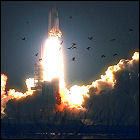 Space Shuttle Atlantis lifts off on the 84th shuttle mission, a ten-day flight with a visit to the Mir space station. Among the supplies hauled to Mir by Atlantis is a new oxygen generator to replace one damaged by a fire aboard the station in February. The crew for Atlantis’ 18th flight is Commander Charles Precourt, Pilot Eileen Collins, mission specialists Michael Foale, Carlos Noriega, Edward Lu, Jean-Francois Clervoy and cosmonaut Elena Kondakova. Foale remains to take up residence on Mir, while American astronaut Jerry Linenger leaves the station to return with the shuttle crew, having spent 132 days in space.
Space Shuttle Atlantis lifts off on the 84th shuttle mission, a ten-day flight with a visit to the Mir space station. Among the supplies hauled to Mir by Atlantis is a new oxygen generator to replace one damaged by a fire aboard the station in February. The crew for Atlantis’ 18th flight is Commander Charles Precourt, Pilot Eileen Collins, mission specialists Michael Foale, Carlos Noriega, Edward Lu, Jean-Francois Clervoy and cosmonaut Elena Kondakova. Foale remains to take up residence on Mir, while American astronaut Jerry Linenger leaves the station to return with the shuttle crew, having spent 132 days in space.
STS-83: recalled to Earth
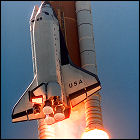 Space Shuttle Columbia is launched on the 83rd shuttle mission, intended to last over two weeks. In the cargo bay, the Spacelab module is set up for an intensive study of the behavior of natural processes in microgravity. A recurring issue with one of the shuttle’s three fuel cells concerns ground controllers enough to recall Columbia to Earth after only 63 orbits, only the third time a shuttle mission has been cut short. Aboard Columbia for her 22nd flight are Commander James Halsell, Pilot Susan Still, Payload Commander Janice Voss, mission specialists Donald Thomas and Michael Gernhardt, and payload specialists Roger Crouch and Greg Linteris. A reflight of the Spacelab mission is scheduled for the upcoming STS-94 mission in July.
Space Shuttle Columbia is launched on the 83rd shuttle mission, intended to last over two weeks. In the cargo bay, the Spacelab module is set up for an intensive study of the behavior of natural processes in microgravity. A recurring issue with one of the shuttle’s three fuel cells concerns ground controllers enough to recall Columbia to Earth after only 63 orbits, only the third time a shuttle mission has been cut short. Aboard Columbia for her 22nd flight are Commander James Halsell, Pilot Susan Still, Payload Commander Janice Voss, mission specialists Donald Thomas and Michael Gernhardt, and payload specialists Roger Crouch and Greg Linteris. A reflight of the Spacelab mission is scheduled for the upcoming STS-94 mission in July.